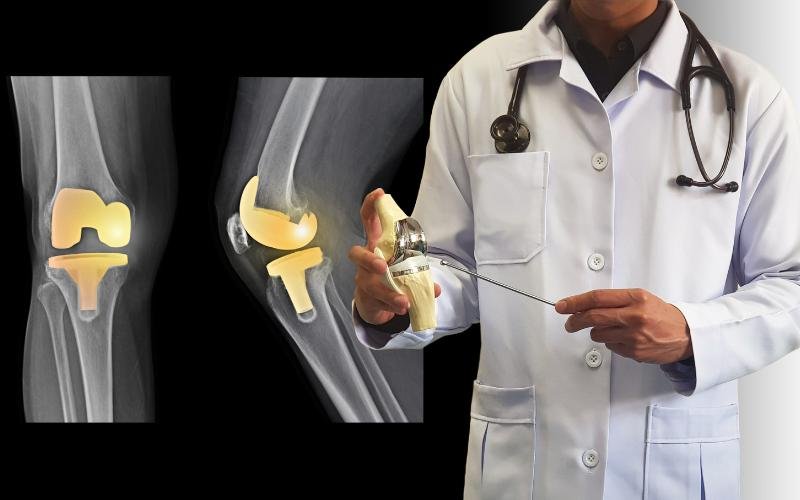Arthritis, more particularly osteoarthritis, is the most prevalent type of knee arthritis that afflicts people, resulting in difficulty while moving, experiencing immense pain and even being disabled. The heavier the weight a person carries: the worse the symptoms and in far advanced cases, day to day tasks also become a significant challenge.
When non-surgical options don’t do much and. movement and pain become unbearable, a knee replacement surgery is a viable option.
Knee replacement surgery
A majority of individuals who have undergone knee replacement surgery abide by it and say it significantly alleviated the pain and discomfort they experienced before surgery.
There are many types of knee replacements,
total knee replacement is when the knee is replaced completely, partial knee replacement
involves replacing just the affected part of the knee and bilateral knee replacement surgery replaces both knees at the same time.
Knee replacement surgery has advanced greatly and today, the surgery is very common and success rates are invariably high for over 90 percent of all cases.
Minimally invasive Knee replacement surgery
More muscle and other soft tissue around the knee are intended to be preserved during minimally invasive surgery, which will aid in a quicker and more effective recovery. In contrast to a standard operation, which requires an 8 to 12-inch incision, a minimally invasive procedure only requires a 3 to 6-inch incision. In addition, the knee cap is frequently not moved, and several soft tissues are routinely moved aside during surgery rather than being severed.
In recent years, minimally invasive knee replacement has become less popular. Invasive surgical procedures are technically difficult and include a unique set of dangers. For instance, less intrusive operations appear to carry a higher risk of nerve injury and post-surgical alignment issues
Computer-assisted knee replacement surgery
The lack of computer-assisted knee replacement surgery in India may be due to the expense and additional time required. However, some research indicates that computer-assisted surgery might offer improved alignment and implant placing. One study comparing nearly 200 procedures discovered that five years after surgery, patients who underwent computer-assisted surgery had greater knee function.
For bowlegged patients, computer aid may be very helpful for aligning prosthesis.
Patients should think about these alternatives, but they should also keep in mind that a surgeon’s experience is still one of the most crucial considerations. For surgeons, understanding some surgical methods and technologies might be challenging. In comparison to a less skilled surgeon, an expert surgeon who employs a standard surgical approach may provide greater results.
During the Total Knee surgery procedure
You’ll be given general anaesthesia, peripheral nerve blocks, and spinal anaesthesia to keep the pain at bay along with antibiotics to tackle any risk of infection.
An orthopedic surgeon will perform the procedure, removing the bone and diseased cartilage from where the thigh bone and shin bone meet at the knee joint. A prosthetic made of metal will replace the removed parts while piece of specialised plastic is used for replacing the back of the kneecap and finally, the same plastic material is taken and between the two metal components.
This provides both bones of the knee joint smooth surfaces once again so they can move, flex and bend with complete freedom and without pain.
After knee surgery
Most patients will have to spend a few days in hospital after their knee replacement, pain medication will be administered and patients will be kept under observation.
Shortly after the pain has subsided, a physical therapist will begin therapy for weight-bearing therapy, standing and walking, physical and occupational therapy to help adapt to the new knee and these exercises will need to be done at home as well.
When you’re good enough to do your tasks by yourself, you’ll be able to go home, with a temporary cane or walker for some time
Total knee replacement recovery
Recovery and rehabilitation are primarily to be done at home and some visits to a physical therapist will be needed as well. Most people will be able to return to their normal lives by the end of 4 weeks.
Regarded as one of the best Knee replacement Surgeon in Delhi, Dr. Aman Dua has years of experience in treating knee pain and replacing knee joints, with zero infection rates, our modular OTs and post-op healing environment, will make your treatment journey with us, joyous.
